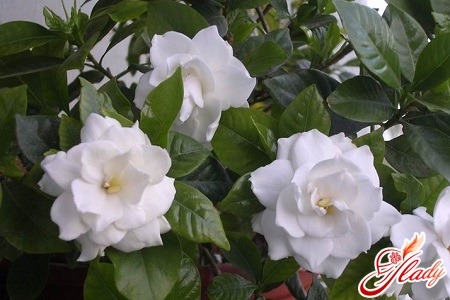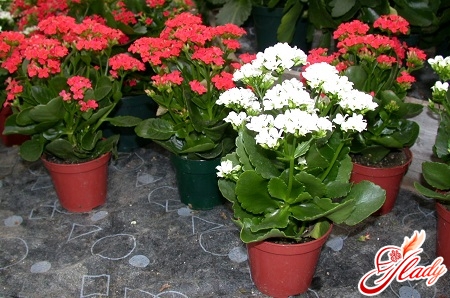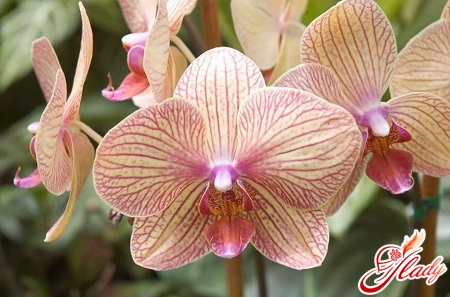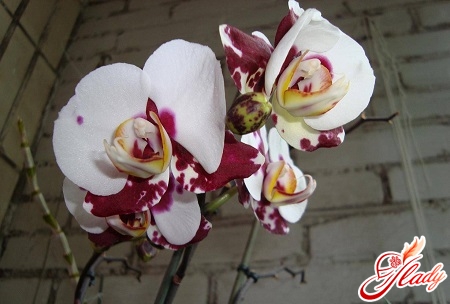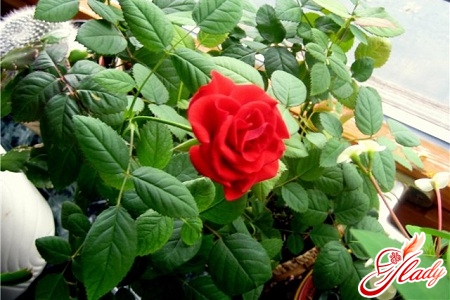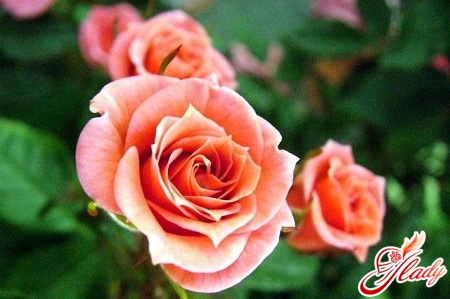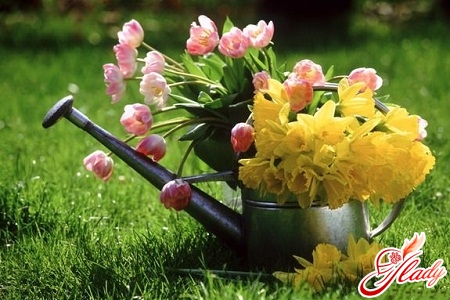 Spring in the Garden - Time for Renewal and Awakeningnature from hibernation. Trees and shrubs will soon be dressed in green lace of young leaves. And for gardeners - both beginners and experienced, this is the hottest time. Care of the garden in the spring directly affects the harvest harvested in summer and autumn, so it should pay special attention. What to do in the garden in the spring? There are lots of options. And start again. To protect coniferous trees from the bright sun, protect them with shading shields or shelters for the crown of non-woven material. In order to destroy the pests of fruit trees, it is necessary to whiten their trunks and skeletal branches with a solution of lime (2.5 kg per 10 liters of water). It is also necessary to inspect young fruit trees and seedlings, especially their lower part, on which cracks in the crust could form during the winter. In this case it is necessary to bandage them with a polyethylene film. In summer, this dressing will need to be repeated. On the tree trunks also can be found solid bodies of fungi, which should be removed, and the remaining wounds in their place treated with garden fumes. Var can be prepared from a thick clay putty consisting of two parts of clay and one part of mullein with the addition of fine straw or hay. It is also necessary to remove the clutches of the ringed silkworm from the crowns of young apple trees. Hanging on a web of dry leaves are removed with the help of sticks, because it is here that the pest's nests are most often found.
Spring in the Garden - Time for Renewal and Awakeningnature from hibernation. Trees and shrubs will soon be dressed in green lace of young leaves. And for gardeners - both beginners and experienced, this is the hottest time. Care of the garden in the spring directly affects the harvest harvested in summer and autumn, so it should pay special attention. What to do in the garden in the spring? There are lots of options. And start again. To protect coniferous trees from the bright sun, protect them with shading shields or shelters for the crown of non-woven material. In order to destroy the pests of fruit trees, it is necessary to whiten their trunks and skeletal branches with a solution of lime (2.5 kg per 10 liters of water). It is also necessary to inspect young fruit trees and seedlings, especially their lower part, on which cracks in the crust could form during the winter. In this case it is necessary to bandage them with a polyethylene film. In summer, this dressing will need to be repeated. On the tree trunks also can be found solid bodies of fungi, which should be removed, and the remaining wounds in their place treated with garden fumes. Var can be prepared from a thick clay putty consisting of two parts of clay and one part of mullein with the addition of fine straw or hay. It is also necessary to remove the clutches of the ringed silkworm from the crowns of young apple trees. Hanging on a web of dry leaves are removed with the help of sticks, because it is here that the pest's nests are most often found.
Pruning of fruit trees
Start pruning fruit trees should beday temperature above 5 degrees C. First of all, you need to do with old apple trees and only then - pears, cherries and plums. Cut berry bushes can be from the end of March. It is best to deal with these manipulations from the early morning, because at this time the snow is still dense enough to walk and is not strongly heated by the sun. If before the whole snow has melted, it was not possible to complete the pruning, it is better to interrupt it until the soil dries. Correctly selected and most importantly, a quality tool is a guarantee of successful pruning. Each gardener must have at least two special knives - copulatory and a serpent. A small pruning, cleaning of small diameter sections, grafting and budding - that's the range of using a copulating knife. With the help of a curved blade with a sharp tip - a serpent can be processed larger slices and the base of the stock. After that they cut out sections of all kinds. The most important tool for pruning is the secateur, so you have to approach it particularly responsibly. You will have to keep it in your hands for a long time, so it's important to check how convenient the size and shape of its handle is. The mechanisms of secateurs also differ - they come with one or two moving blades. One blade holds the branch more firmly and not so much slides over the bark. With the second type of secateurs, you can achieve a more accurate cut, and also cut the branch at the very base. It is also difficult to imagine working in the garden without a saw blade (a garden hacksaw). By adjusting the direction of its web, it is easy to thin the thick or vertically oriented branches. In order to dilute the thickened crowns of trees and shrubs, it is convenient to use loppers, which do not leave in place the cut of the protruding parts. Truncated shoots of valuable fruit crops, not infected with diseases and not mechanically damaged, can be used for grafting, and berry bushes - for propagation. Store shoots before using them in snow or in wet sand in the basement. Each grade is better to sign with a rod of ballpoint pen on the foil. 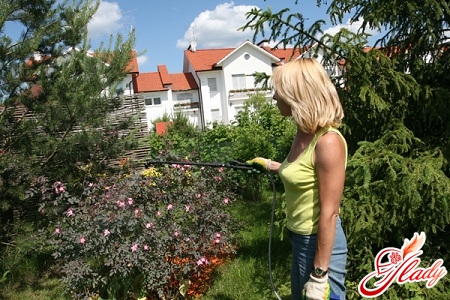
Care of decorative shrubs
Abundant flowering, beautiful foliage or gracefulneedles make decorative shrubs a real garden ornament of almost any style. It is a mistake to believe that after planting shrubs they do not require any care. Timely and correct pruning is required for all types of ornamental shrubs, it is needed to remove dead and damaged shoots, helps to restrain rapid growth and form a beautiful crown, stimulate flowering, and rejuvenate old shrubs. The main task of pruning the smart bushes is to achieve the maximum decorative effect for which these plants are planted. The method of pruning shrubs is sufficiently differentiated depending on the distinctive features of each species. According to the types of pruning, all bushes can be conditionally divided into two large groups - beautifully flowering (to them are also shrubs with beautiful fruits: barberry, cotoneaster, etc.) and ornamental-deciduous. The main purpose of growing beautifully flowering shrubs is their magnificent flowers, so with the help of proper pruning you can achieve their abundant flowering. Such plants, in turn, can be divided into three groups according to the peculiarities of trimming. The first group includes shrubs that do not form replacing shoots from the base or the lower part of the crown. Each year, the growth in these plants occur around the perimeter of the crown. The most common representatives of this group are viburnum vulgaris, cotoneaster, varietal lilac, magnolia, common barberry, Syrian hibiscus and others. Shrubs of this group need the very minimum care for them. After planting them in the early years, the most important task is to form the skeleton of a plant from strong branches. This is achieved by removing early in spring all weak, criss-crossed and incorrectly located shoots, spoiling the appearance of the plant. When pruning adult bushes, it is sufficient to limit the removal of damaged, diseased and shriveled branches. To maintain the desired decorative appearance of the bushes and the symmetry of the branches, some live shoots are sometimes cut. Shrubs blooming on last year's shoots constitute the second group. They include such plants as some species of spirits, stephanandra, hydrangea large-leaved, chubushnik, almond tri-lobed, Japanese kerriya and others. The flowering period of these plants usually occurs in the spring or early summer. It should be taken into account that they grow very fast, therefore it is necessary to plant seedlings no more than two or three years old. Care for them is to cut off the faded branches immediately after flowering. It is important to remove thin and weak growths and leave only the strongest. The third group includes shrubs that blossom on the shoots of the current year. The most common representatives of this group are the budleya of David, abundantly blooming in the summer period forms of spirals (spirea Bumalda, ivolistnaya, Douglas), as well as hydrangeas paniculate and arborescent. Plants of this group should be pruned in early spring to form powerful shoots, this contributes to their abundant flowering in summer or early autumn. Without such care, these shrubs will quickly thicken, and their appearance will become neglected and unaesthetic. And over time, you can pay for the quality of flowering of adult shrubs. Pruning of deciduous and deciduous shrubs should also be done every year in early spring, and they need to be cut off quite diligently. This is done in order to stimulate the active growth of young shoots and achieve maximum decorative effect with the help of their leaves. Such shrubs include, for example: the Tunberga barberry, the red-leaved forms of barberry, hazel, scum and the golden form of elder black. It is also important to remember that pruning is only part of the complex care of decorative shrubs. The beauty of plants in the garden also depends on the provision of many of their other needs. It is also important to water, feed them regularly, timely, mulch the soil, remove weeds, fight diseases and pests and protect the heat-loving plants in winter.
Care of flower beds in spring
Working in the garden in the spring is impossible without caring forevergreen perennials and tillage in flower beds and flower beds. Care for perennial flowers begins in April with the cleaning of plant remains, dry twigs and leaves that have remained since last season. Also those perennials that have entered the winter season with leaves are pruned. If the stems and leaves were not trimmed in autumn in pions or phlox, then during the spring works the remaining stems are cut almost to the level of the soil. It is not necessary to stack the remaining plant rubbish after the winter in the compost pile, as it can become a source of many diseases, it is better to burn it. From the second half of the month, you can begin planting, dividing and transplanting perennials, since April is more suitable for this period than autumn, especially for delicate species of perennial flowering plants. As soon as the warm weather is established, you can divide phloxes, daylilies, monarchs and astilba. It is important to remember that categorically it is impossible to prune green leaves of evergreen perennials that have left from under the snow. This applies to plants such as saxifrage, young, badan, primrose, iris, carnation, gader and others. In early spring, these seemingly very ugly and feeble leaves actively serve the plants, since they gather nutrients for them, which they need for full flowering. At the end of April, it is highly desirable to add organic fertilizers with a high nitrogen content to the soil areas with perennial flowers. Then it is necessary to carefully loosen the soil around perennials, it is of particular importance if soil mulching operations were not carried out on the surface of flower beds before the beginning of winter. In some plants (irises, phlox), the rhizomes are located very close to the surface, so they should be loosened very carefully and shallow. During the winter period there is a significant compaction of the soil in the flower beds, so you need to loosen it about a centimeter by fifteen. During this procedure, it is important not to injure plants that begin to grow later than others - it Volzhanka, some kinds of bells, hosts, astilba and others. Simultaneously with the treatment of the soil in the flower gardens it is important to weed the weeds, since during this period they still do not have time to take root and their weeding is quite easy to perform. The most easily removed in the spring are weeds with long rhizomes, as well as wheatgrass, osier and hiccough. With a sharp change in temperature and the absence of snow, blooming in the spring perennials can be observed bulging, that is, rising above the ground. In this case, the plants must again be properly planted and cover the surface of the ground near them with mulch. This will help prevent a strong overheating of the soil during the day and freezing of the earth at night. We advise you to read:




